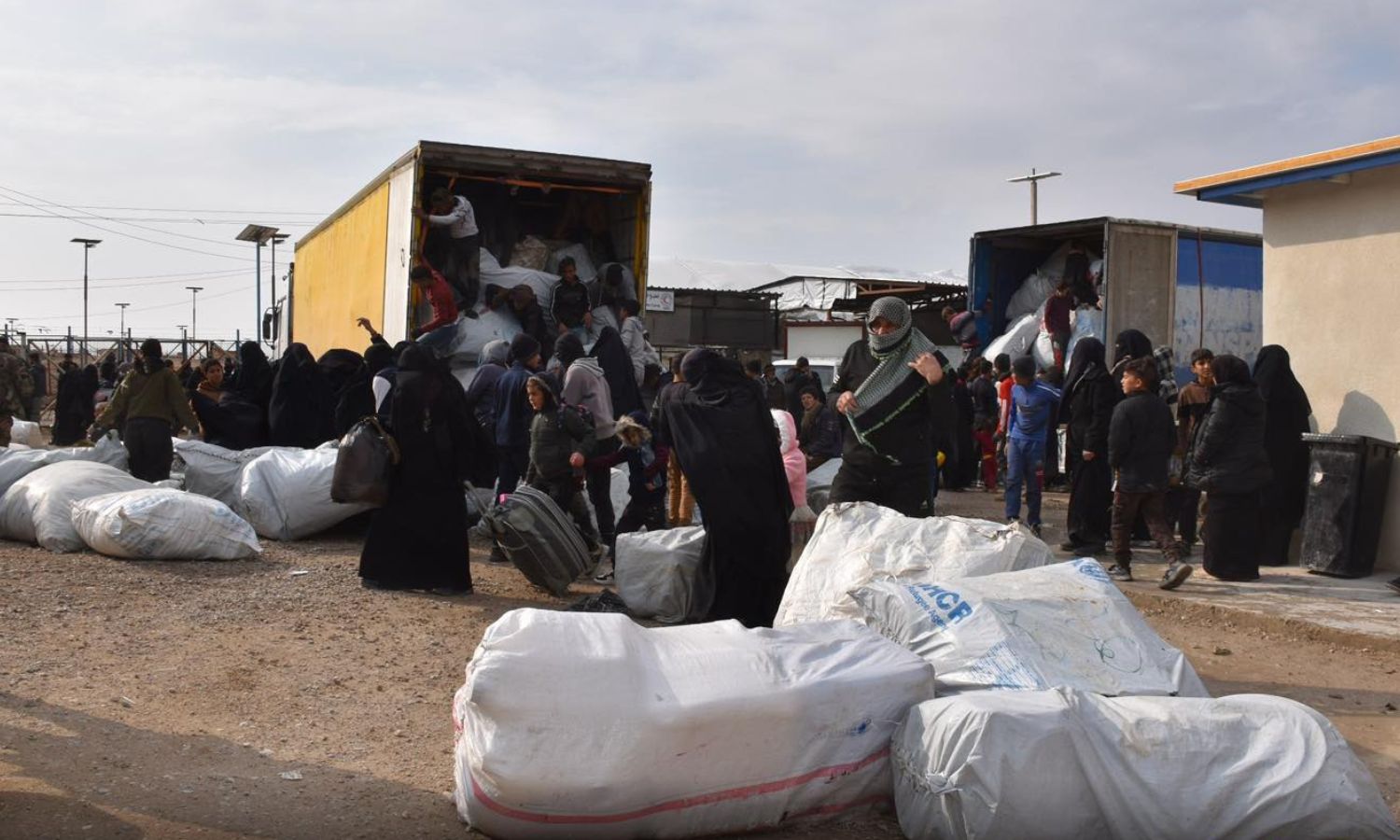Today, Sunday, February 9, 155 Iraqi families left al-Hol Camp in the countryside of Hassakeh, which is under the control of the Autonomous Administration.
In a statement, the Autonomous Administration announced that the camp administration had facilitated the departure of 155 families (a total of 569 people) and handed them over to the Iraqi government.
The Autonomous Administration added that this was the fourth batch of departures in 2025, following three previous evacuations coordinated with the Iraqi government.
The Perilous Delay of Transitional Justice: Homs as a Case Study
At the end of last month, the third batch of 90 Iraqi families (approximately 500 people) left al-Hol Camp, in coordination between the Autonomous Administration of Northeastern Syria, the Iraqi Parliament’s Security Committee, and the Migration and Displacement Committee.
On January 8, the first batch—consisting of 193 Iraqi families (715 people)—departed the camp. The second batch, which left on January 25, included 148 families (578 people).
Reintegration Efforts and Support for Returnees
In a related context, Hala al-Mohammed, an administrator at the Social Welfare Center in Tabqa, affiliated with the Autonomous Administration, stated today that the center has completed the registration of 225 families returning from al-Hol Camp to Tabqa. The center continues to assess their needs in collaboration with specialized humanitarian organizations.
Al-Mohammed added that operations have slowed in recent weeks due to some organizations halting their activities, but the center is working to coordinate with active organizations to ensure continued support for returnees.
She also mentioned that the Social Welfare Center, in partnership with a humanitarian organization, is currently conducting training sessions to teach women returning from al-Hol how to make cleaning products. This initiative aims to equip them with new skills, helping them secure financial stability and improve their living conditions.
The Situation at al-Hol Camp
Al-Hol Camp, located in Hassakeh, houses 38,890 people, primarily families of ISIS members, including Syrians and individuals of other nationalities.
The United Nations, in cooperation with the Iraqi government, has launched a plan to facilitate the return, rehabilitation, and reintegration of Iraqis from the al-Hol and Roj camps in northeastern Syria.
On January 30, the UN and the Iraqi government initiated Phase Two of the “New Beginnings” plan, which aims to ensure the safe, voluntary, and dignified return of Iraqi citizens from the al-Hol and Roj camps and support their reintegration into their hometowns and communities.
The UN’s plan builds upon efforts led by Iraq since 2021 to repatriate its citizens, particularly women and children who have lived under harsh and unstable conditions in al-Hol Camp.
According to the UN, children make up more than 60% of the Iraqi population in the camp, with 20% under the age of five. Many have been deprived of basic rights, including education.
This article was translated and edited by The Syrian Observer. The Syrian Observer has not verified the content of this story. Responsibility for the information and views set out in this article lies entirely with the author.


